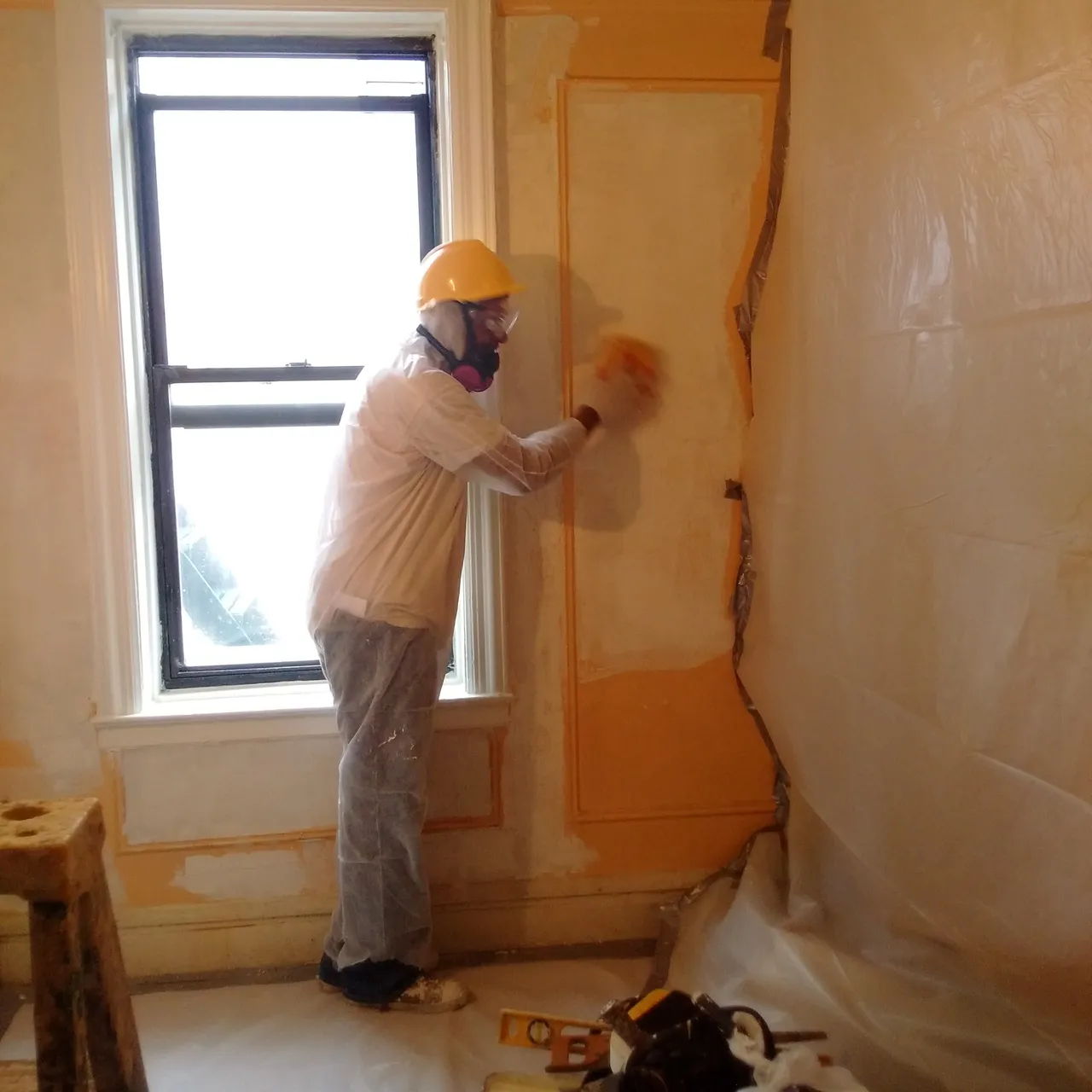Specialist Lead Violation Removal in NYC-- Secure Against Health Hazards
Specialist Lead Violation Removal in NYC-- Secure Against Health Hazards
Blog Article
Finest Practices for Guaranteeing Safe and Detailed Lead Violation Abatement
Dealing with lead infraction reduction needs a multi-faceted strategy to guarantee both security and conformity. Preliminary assessments utilizing advanced detection approaches such as XRF analyzers set the stage for a precise understanding of contamination levels. Including correct control strategies, including airtight barriers and HEPA purification, combined with using personal safety tools (PPE) for employees, creates the foundation of a safe procedure. Careful clean-up methods, including HEPA vacuuming and wet-wiping, are essential. It's the last clearance process, entailing detailed examinations and laboratory screening, that really confirms a lead-free environment, guaranteeing long-term safety and security. How do these methods interconnect to ensure detailed lead abatement?

Initial Assessment
Carrying out a first evaluation is an essential primary step in lead infraction abatement. This stage includes a detailed analysis of the building to recognize the presence, level, and particular areas of lead-based hazards. Qualified specialists, such as licensed lead examiners or take the chance of assessors, should execute an extensive site evaluation, utilizing tools like X-ray fluorescence (XRF) analyzers to accurately find and measure lead focus in paint, dirt, dirt, and water.
The assessment must likewise consist of a testimonial of the structure's history, previous records, and any grievances or health and wellness concerns reported by occupants - Lead Removal Contractors. Documenting the findings meticulously is essential, as these records form the basis for developing a reliable abatement approach. A comprehensive assessment likewise involves tasting and research laboratory evaluation, which are crucial to verify the existence of lead and guide succeeding actions
Furthermore, it is critical to connect the results transparently to all stakeholders, consisting of building owners, occupants, and governing authorities. By making sure that the preliminary analysis is performed with accuracy and roughness, specialists can lay a solid structure for a targeted and effective lead abatement process, inevitably protecting public health and ensuring compliance with regulatory criteria.
Correct Containment
Correct containment is important to stop the spread of lead contaminants during abatement tasks. Successfully handling control decreases the danger of lead dust and debris migrating to non-work areas, thereby safeguarding both the setting and individuals outside the instant work area. To accomplish correct control, a closed barrier of plastic bed linen must be established around the workplace, making sure all seams and sides are firmly sealed. Lead Removal Contractors. This barrier should expand from floor to ceiling and be taped down to prevent any leakages.

Normal examinations of the containment area are essential to look for breaches or weaknesses in the barrier. Any determined issues need to be promptly resolved to keep the integrity of the control. By sticking to these methods, abatement jobs can effectively control lead contamination and alleviate connected health threats.
Worker Security
Guaranteeing worker defense is next page paramount during lead abatement projects to stop occupational direct exposure to unsafe lead bits. Vital procedures consist of using individual protective devices (PPE) such as respirators, gloves, and full-body matches specifically developed to obstruct lead dirt and fumes. Workers should undertake detailed training on the appropriate usage and maintenance of PPE, including in shape testing for respirators read the article to guarantee optimum efficacy.
Engineering controls, such as local exhaust ventilation systems, are essential in lessening air-borne lead focus in the job environment. Administrative controls ought to additionally be carried out, including restricting the period of direct exposure and rotating employees to reduce private exposure times. Regular clinical security and biological tracking are essential for very early discovery of lead absorption, enabling timely intervention and therapy.
Moreover, establishing a purification method is crucial. Employees have to follow rigid purification treatments prior to breaks and at the end of their change to stop lead dirt from being carried outside the workplace. This consists of detailed hand and face cleaning with lead-specific cleaner and altering out of polluted clothes.
Careful Clean-up
Maintaining a secure work setting expands beyond worker security and includes careful cleanup to make certain lead particles are thoroughly eliminated from the site. The procedure of thorough cleanup is vital in protecting against the recontamination of the abated location and securing both present and future owners.
To attain a detailed cleaning, all workspace should be methodically sanitized. This entails using specialized HEPA (High-Efficiency Particulate Air) hoover and wet-wiping strategies to record and get rid of fine lead dust that may have chosen surfaces. It is vital to clean all straight surfaces, including floorings, window sills, and counter tops, in addition to vertical surface areas that might have trapped lead fragments.
Employees should use proper individual protective devices (PPE) during cleanup to stay clear of direct exposure to recurring lead dust. Made use of cleaning materials such as wipes, sponges, and wipe heads should be taken care of in accordance with hazardous waste disposal laws.

Last Clearance
Final clearance is the essential concluding stage of lead reduction that figures out whether the website is risk-free for reoccupation. This essential action includes detailed assessment and testing to validate that all lead risks have actually been successfully eliminated.

Final clearance screening not only secures future residents yet additionally ensures compliance with local, state, and government guidelines. It serves as a documented recognition of the abatement specialist's adherence to sector finest methods. Guaranteeing a complete and effective final clearance is important in guarding public health and wellness and fostering rely on the reduction procedure.
Conclusion
Guaranteeing safe and detailed lead offense reduction requires a complex technique encompassing first assessments with innovative detection techniques, reliable control strategies, rigid employee security protocols, and thorough cleanup treatments. The final clearance stage, including in-depth evaluations and laboratory testing, is critical to validate conformity with EPA requirements. Adherence to these finest techniques guarantees a risk-free setting for occupants, alleviates wellness risks, and maintains regulatory demands, therefore promoting public wellness and safety in lead-affected areas.
Report this page